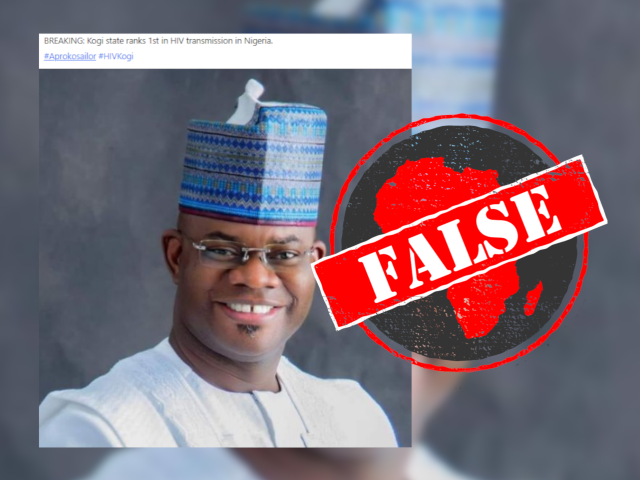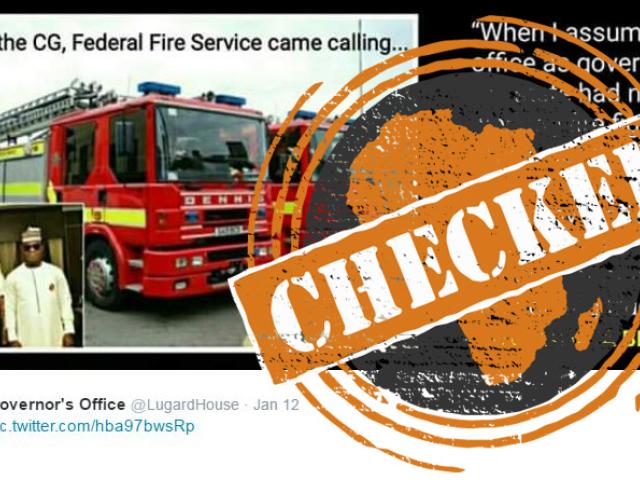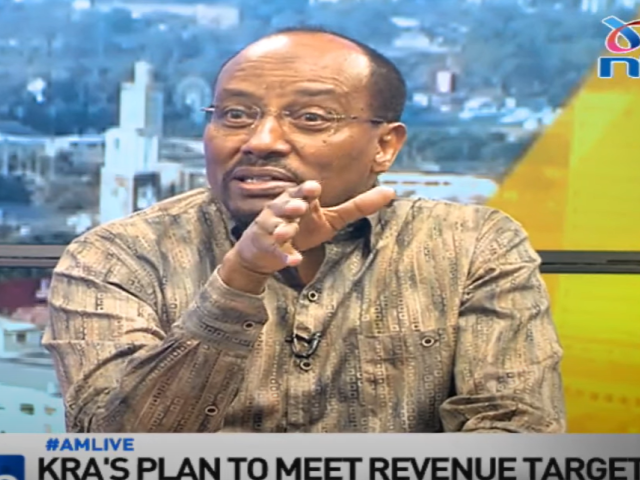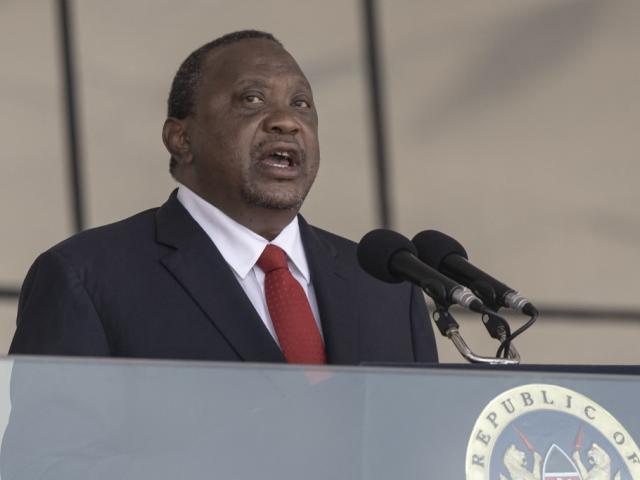-
In discussing what percentage of Kenya’s spending is on education, the only thing former teachers’ union leader Wilson Sossion got right was that the country spends more on the sector than what the United Nations recommends.
- Sossion was wrong about Kenya’s ranking in a global competitiveness index – the country has never ranked first among African countries – and about what percentage of either the budget or GDP is spent on education.
-
The education minister also didn't get the percentage of the budget allocated to education right, and a former defence minister misrepresented the number of pupils moving from primary to secondary school.
Kenya's education system has been under a relentless spotlight in recent months, with the government criticised for both underfunding and mismanagement.
In January 2024, headteachers threatened to close schools because of a funding crisis, while the roll-out of a new curriculum has been hit by bottlenecks.
Questions have also been raised about the credibility of the national exams.
As the criticism mounted, it was reported that more than 130,000 pupils had failed to enrol in secondary schools, some because they couldn't afford the fees.
Against this backdrop of turbulence, Africa Check fact-checked six different claims made by prominent figures about the state of education in the country.
On 15 January 2024, while using artificial intelligence tools to monitor public debate, Africa Check spotted a news article claiming that the government had “allocated 30% of the national budget” to the education sector.
The story, published on the digital platform of the state-owned Kenya News Agency, cited Kenya’s education minister, Ezekiel Machogu, as its source.
“[The minister] explained that in the last budget, the government allocated over Sh630 billion towards education which is 30% of the national budget,” the article said.
We tracked down the footage of Machogu speaking at an official event in Murang'a county, about 85 kilometres north-east of the capital Nairobi.
“The government spends over 30% of its total revenue of the entire budget in matters education,” the minister said, putting the allocation at KSh630 billion in the 2023/24 budget (about US$3.93 billion at current exchange rates).
Several sources indicate minister’s figure was off
Kenya's education sector includes basic, technical and tertiary education, as well as the Teachers Service Commission, the employer of all public school teachers – and the country's largest employer.
The country’s treasury publishes the national budget each June. The latest budget statement, released on 15 June 2023, put total revenue at KSh2.96 trillion (about $18.44 billion) for the 2023-24 financial year.
Education was allocated KSh628.6 billion, or 21.2% of total revenue.
Other sources also indicate the minister’s figure was off.
- In its quarterly budget report published in November 2023, revenues for the 2023-24 financial year were estimated at KSh3.025 trillion. Education accounted for 20.7% of this.
- The Office of the Controller of Budget authorises all government expenditure in accordance with approved budgets. It publishes quarterly reports detailing how much revenue has been collected and how the funds have been allocated to spending units. The most recent report showed a revenue figure of KSh3.16 trillion, with education getting KSh628.6 billion, or 19.8%.
What of education’s share as a portion of the total budget?
The controller of budget put the total budget at KSh4.87 trillion ($30.34 billion).
This included KSh588.9 billion in appropriation-in-aid, or income generated by government ministries or agencies and then used to offset its expenditure, rather than being paid into the central treasury. The total figure also included KSh149.2 billion in grants, revenues and cash balances in the 47 counties. These were deducted in the net budget estimates to arrive at a net budget of KSh4.13 trillion.
The education budget of KSh628.6 billion therefore represents 12.9% of the gross budget and 15.2% of the net estimates.
The minister’s claim remains incorrect. – Makinia Juma
Speaking on a national television news programme on 29 January 2024, Wilson Sossion, a former teacher's union leader, said “disruptive policies” in Kenya’s education sector over the past decade had affected access and quality.
He cited a failed laptop project and the messy roll-out of the new competency-based curriculum as examples.
“Kenya then was number one in Africa in [the] global competitiveness index in terms of quality and access in education. We have now dropped to number seven,” he said.
Sossion was elected secretary general of the Kenya National Union of Teachers, the country's largest teachers' union, in 2013. He stepped down in 2021.
He told Africa Check he had obtained the data from the World Bank’s Global Competitiveness Index. The bank cites the World Economic Forum (WEF) as its data source.
But the WEF suspended publication of the index in 2020 following the disruption caused by the Covid-19 pandemic. Sossion promised to share the data with us. We will update this report when we hear back.
The competitiveness index covered all the elements that influence a country’s ability to compete internationally, including the health of the labour market, the financial system, the market size, infrastructure, healthcare, skills, innovation capacity and macroeconomic stability.
It also covered the “institutions, policies, and factors that determine the level of productivity of a country” – not just the quality of and access to education.
In 2012-13, Kenya was ranked 12th in Africa and 106th in the world. South Africa topped the continent, followed by Mauritius, Rwanda, Morocco, Seychelles, Botswana, Namibia, Gabon, Zambia and Ghana.
Kenya climbed to 10th place in Africa in the 2013-14 index, and was again ranked 10th in the most recent report, published in 2019.
We found no evidence that Kenya led Africa in education quality and access. We therefore rate this claim as incorrect. – Tess Wandia
On the same TV programme, Sossion said Kenya spent “at least 28% of the overall budget” on education.
However, a review of data from the national treasury and the controller of budget, as calculated in the first claim in this report, shows that the education sector received between 12.9% and 15.2% of the national budget.
We rate this claim as incorrect as well.– Makinia Juma
Sossion also said that Kenya spends more than 6% of its gross domestic product (GDP) on education.
A country’s GDP is a measure of the size of its economy. It is the market value of all the production of goods and services in a given period of time, usually a year.
In its latest annual economic survey, the Kenya National Bureau of Statistics (KNBS) estimated GDP at KSh13.4 trillion in 2022.
The Central Bank of Kenya puts it at KSh13.5 trillion and the World Bank at KSh13.4 trillion, or $113.42 billion. (Note: KNBS used the 2022 annual average exchange rate of KSh117.87 to the US dollar. The World Bank's average annual exchange rate was KSh117.49 to the dollar.)
Using the latest GDP figure of KSh13.4 trillion, 6% of this is KSh804 billion.
But recall that the treasury's budget statement put the allocation for the education sector at KSh628.6 billion. This official allocation represents 4.7% of the country's GDP – and not “over 6%” as claimed by Sossion. – Makinia Juma
The United Nations Educational, Scientific and Cultural Organisation, or Unesco, is a UN agency with the mission to promote education, science and culture worldwide.
In May 2015, the agency led the adoption of a vision to guide the education agenda, including funding, until 2030. Formally known as the Incheon Declaration and Framework for Action, it recommended education funding of 4 to 6% of GDP or 15 to 20% of public expenditure.
“In general, high values of the indicator denote great government policy priority for education. Values of at least 4% to 6% indicate that the country meets the benchmark endorsed by the Education 2030 Framework for Action,” says a Unesco update published in March 2022.
According to the World Bank, in 2022 Kenya spent the equivalent of 4.1% of its GDP on education. In the last financial year, with a budget allocation of KSh628.6 billion against the latest GDP figure of KSh13.4 trillion, this is 4.7%.
Kenya's allocation to education is thus above the minimum Unesco threshold of 4% of GDP.
Spending threshold
The Unesco target is also to spend between 15 and 20% of total public expenditure on education. Total expenditure includes money for capital and recurrent expenditure, as well as for debt repayment and other statutory payments.
|
Kenya’s total government expenditure 2023/24 (KSh billion) |
|
|
Public debt |
1,751.1 |
|
Recurrent expenditure |
1,564.9 |
|
Capital expenditure |
807.6 |
|
Pensions and gratuities |
189.1 |
|
Salaries, allowances, and miscellaneous for state officers |
23.5 |
|
Subscription to international organisations |
0.05 |
|
Total expenditure |
4,336.3 |
Source: Controller of budget report, November 2023.
In the 2023/24 financial year, the total expenditure is budgeted at KSh4.33 trillion while the allocation for education is KSh628.6 billion, or 14.5%.
Kenya's 47 counties allocated KSh44 billion to education-related departments out of their total allocation by the national government of KSh534.63 billion, or 8.43%. (See our working here.)
In total, the country allocated KSh672.6 billion out of an estimated total expenditure of KSh4.87 trillion, an average of 13.8%.
The Unesco target is for education funding to be either 4 to 6% of GDP “and/or” 15 to 20% of public expenditure.
Kenya fulfils the GDP criteria and has therefore exceeded, albeit marginally, the minimum benchmark. It also comes close to the public spending target. We therefore rate the claim as mostly correct. – Makinia Juma
Eugene Wamalwa, an ex-defence minister, turned up at Spice FM, a mainstream radio station, to defend the legacy of his former boss and Kenya’s former president Uhuru Kenyatta.
Wamalwa cited the primary to secondary transition rate as one of the achievements of the Kenyatta administration. “We were celebrated as one of the few African countries to achieve 100% transition from primary to secondary [school],” he said.
Kenya has been pursuing a policy of having a 100% primary to secondary education transition rate.
For data on this rate, we checked the World Development Indicators, a World Bank database.
Here, the transition rate, also called the progression rate, is referred to as “the number of new entrants to the first grade of secondary school in a given year as a percentage of the number of students enrolled in the final grade of primary school in the previous year”.
The World Bank cited the Unesco Institute for Statistics as the data source.
Unesco’s head of education statistics, through senior press officer Clare O’Hagan, told Africa Check that the agency “does not disseminate any data on transition rates anymore”.
For newer data, Unesco asked Africa Check to check with the national statistics agency, in this case the Kenya National Bureau of Statistics. The bureau tracks transition rates from primary to secondary school and reports these annually in its flagship economic survey. The data does not show a 100% transition rate since 2014, when Kenyatta had been in office for a year.
|
Kenya’s primary-secondary transition rate (2014-2022) |
|||||||||
|
Year |
2014 |
2015 |
2016 |
2017 |
2018 |
2019 |
2020 |
2021 |
2022 |
|
Rate (%) |
76.1 |
81.9 |
81.3 |
83.1 |
83.3 |
85.5 |
91.0 |
78.5 |
78.6 |
Sources: Annual economic surveys 2019 and 2023
We looked again at the numbers in the Unesco dataset and saw a statistic that put the rate at 99.2% in 2015, the last time there was data for Kenya. That data is old and doesn't match the figure recorded by the country's statistics agency.
Were there any African countries that achieved 100% transition?
We checked Unesco’s data on the World Bank’s website. No country in Africa reached 100%. Although it said Kenya had a 99% transition in 2015, it noted that other Unesco data from the Demographic Health Survey put it at 83% in 2014.
“Indicators are produced based on administrative data provided by the country, and can differ from indicators produced from household surveys,” O’Hagan said in an email.
Some countries did not report their figures, Unesco said, and the data came from annual school censuses.
In January 2024, Kenya’s education ministry announced a transition rate of 91%.
Wamalwa’s claim that Kenya was one of the few countries in Africa to achieve the transition rate is not supported by the data. When Unesco used to track the data, no country in Africa achieved 100% transition, and Kenya hasn't reached that mark yet, according to its official statistics office.
We rate the claim incorrect. – Tess Wandia







Add new comment